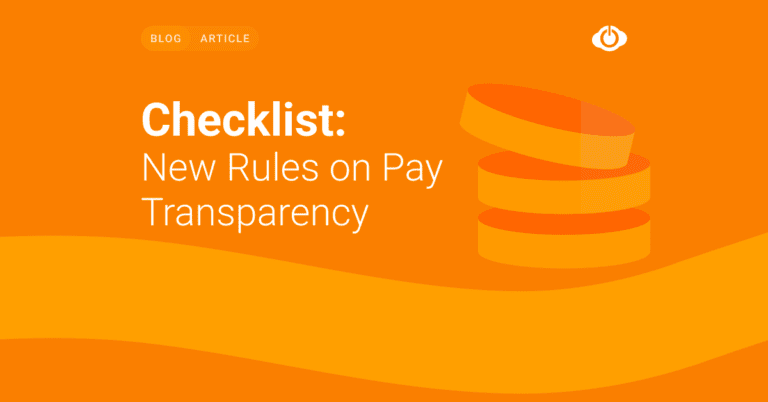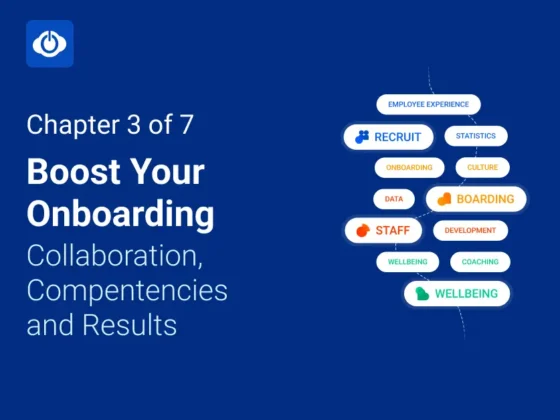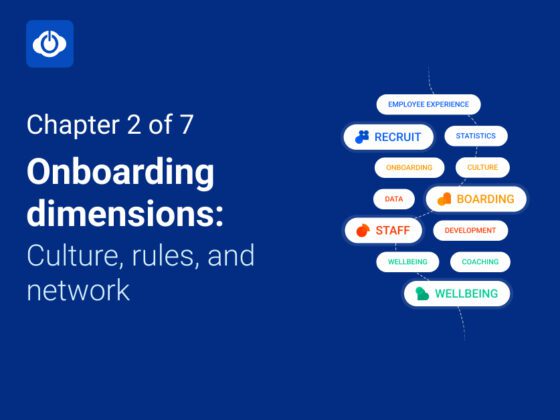The EU Pay Transparency Directive: A Practical Checklist for Compliance
Webinars, articles, and LinkedIn posts buzz about the EU Pay Transparency Directive. The directive officially takes effect on 7 June 2026, and organizations across the EU are preparing to comply. But what exactly does it entail—and how can your company best prepare?
In this blog post, we provide an overview of the directive’s background, its implications for companies across EU countries, and a practical checklist to help HR and leadership teams prepare for this transformative shift toward pay equity and salary transparency.
CONTENT:
Before the EU Pay Transparency Directive: Why Change Is Needed
The EU Pay Transparency Directive Explained: What Employers Need to Know
The EU Pay Transparency Directive Is Just the Beginning
Talking to Employees About the EU Pay Transparency Directive
The Ultimate EU Pay Transparency Directive Checklist for Employers
Why You Should Communicate Early About the EU Pay Transparency Directive
FAQ: What to Know About the EU Pay Transparency Directive
Before the EU Pay Transparency Directive: Why Change Is Needed
The principle of equal pay for equal work has been part of European law since the very beginning of the EU. It was first established in Article 119 of the Treaty of Rome in 1957, making gender pay equality a founding principle of the European Economic Community. This was later reinforced, which required member states to implement legislation ensuring that men and women receive equal pay for the same work or work of equal value.
Despite this legal foundation, achieving real pay equity remains a challenge across the EU. According to Eurostat data, the average unadjusted gender pay gap in the EU stood at 12.7% in 2021, with some member states reporting gaps of over 15%.
Even when adjusting for relevant variables such as sector, education level, and seniority, a considerable portion of the wage gap remains unexplained. This reflects deeper structural inequalities and unconscious biases embedded in pay systems, as highlighted in a European Parliament report on the gender pay gap.
This persistent inequality is what the EU Pay Transparency Directive seeks to address. Moving from voluntary guidelines to enforceable rules, the directive introduces binding obligations for companies to disclose salary structures, provide access to pay data, and report regularly on gender pay differences. By making opaque systems visible, it aims to empower employees and employers to take real action toward fair and transparent pay practices.
The EU Pay Transparency Directive Explained: What Employers Need to Know
Adopted in 2023, the EU Pay Transparency Directive is part of the EU’s broader push toward equality and social fairness. It aims to ensure equal pay for equal work or work of equal value, regardless of gender.
For the first time, employers across the EU are subject to mandatory action. Companies with over 100 employees must include salary ranges in job postings, document pay criteria and ensure objectivity, report gender pay gaps, and provide data transparency.
Employees will gain the right to know the average pay levels of colleagues in comparable roles, making salary transparency a built-in feature of workplace culture. It represents a significant shift in how employers across the EU approach compensation. With the implementation deadline of 7 June 2026, now is the time to start preparing.
How We’re Preparing at HR-ON
At HR-ON, we’re closely following the development of the EU Pay Transparency Directive and are eager to see how it will be implemented across EU countries. Requirements like transparency in pay practices and salary ranges in job ads must be adopted, and this is only the beginning.
The EU Pay Transparency Directive Is Just the Beginning
While the directive currently focuses on the binary gender pay gap, it opens the door to broader inclusion. As gender identity and diversity evolve, future legislation may extend pay transparency measures to encompass non-binary and underrepresented groups.
The rollout of this directive can be compared to the introduction of GDPR. Initially perceived as overwhelming, data protection laws are now standard practice. A similar journey lies ahead for salary transparency in the EU.
Talking to Employees About the EU Pay Transparency Directive
This shift is not just a legal or operational change; it’s a cultural one. Employees may have concerns, questions, or expectations that need addressing. Transparent communication is key.
With an HR platform like HR-ON Staff, employers can use feedback features and engagement surveys to assess how the directive is perceived internally. These tools help identify concerns early and support an open, trusting dialogue between HR and employees.
Implementing the directive becomes more than a box to tick; it invests in employee well-being, trust, and transparency.
The Ultimate EU Pay Transparency Directive Checklist for Employers
1) Map Out Your Current Salary Structure
Document how pay is currently determined. Are your criteria objective and applied consistently across roles and genders?
2) Prepare to Include Salary Ranges in Job Ads
Build internal systems that allow salary bands to be published in all new job listings.
3) Analyze Your HR Data
Review compensation across gender, seniority, and role to spot patterns or disparities that may need correction.
4) Update Pay Policies
Ensure pay policies are transparent, accessible, and communicated to leadership and employees.
5) Train HR and Managers
Ensure everyone involved understands the directive and your company’s approach to compliance.
6) Engage Employees Early
Don’t wait for too long. Start conversations now. Use tools like feedback surveys to involve your team meaningfully.
7) Plan Internal Communication
Set up regular updates and touchpoints to inform your workforce as the directive is implemented.
8) Learn From Others
Connect with peer companies across the EU. Exchanging best practices can accelerate your progress and help avoid pitfalls.
9) Clarify Ownership and Data Access
Who collects the data? Who reports it? Who ensures compliance? Define clear roles and responsibilities now.
10) Stay Updated on National Implementation
While the directive is EU-wide, national implementation will vary. Monitor guidance from your country’s regulatory authorities.
Why You Should Communicate Early About the EU Pay Transparency Directive
It might be tempting to wait until national laws are finalized, but don’t. Silence creates uncertainty. Early communication empowers your employees and makes implementation smoother.
And no, you don’t need all the answers. What matters is starting the conversation. When leadership is proactive and transparent, employees feel valued, heard, and involved.
With HR-ON, your communication efforts become easier to manage. Our platform provides engagement tracking and pulse surveys to help you support your workforce throughout the transition.
Book a demo or use our pricing calculator to estimate the cost of HR-ON for your business.
This article is for informational purposes only and does not constitute legal advice. Please consult a legal professional to understand how the directive applies to your organization.
FAQ: What to Know About the EU Pay Transparency Directive
When does the directive come into effect?
7 June 2026. Many businesses are already preparing.
What does "pay transparency" mean in practice?
It gives employees the right to access pay data and requires employers to document how salaries are determined.
Does the directive apply to all companies?
Yes, but some obligations (like reporting pay gaps) apply only to larger companies (100+ employees).
Will we need to include salaries in job ads?
Yes. Job listings must state salary ranges so candidates know what to expect.
How does the directive differ from national laws?
The directive sets the framework, but each EU country will implement it differently. Stay informed through your local regulators.




